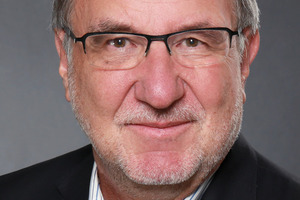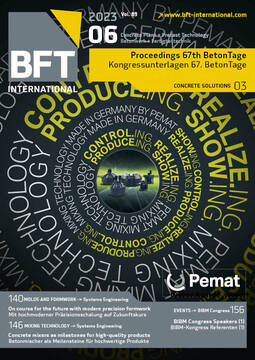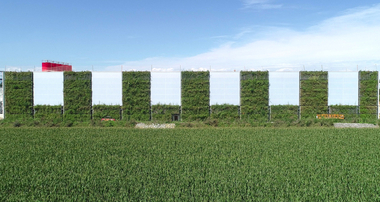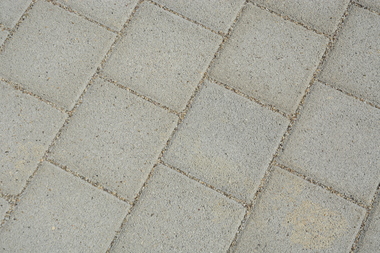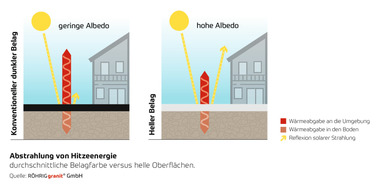Environmental relief through urban surfaces – more than a contribution to sponge city
Every day thousands of square meters are newly sealed or renewed. These days, road surfaces are selected largely according to technical road construction requirements; in inner-city areas, design aspects are also added in the case of demanding plans. Little attention has been paid so far to the manifold chances for relieving the environment that may be associated with the selection of appropriate building materials.
The discussion about coping with environmental problems tends to identify the problems on a singular basis and to find one-dimensional solutions each (“cause-effect principle”). Hence, the person responsible for noise control often does not know about the problems the person in charge of air pollution control has to solve; thus, the current focus is on the topic of “sponge city”, with the topic of “urban climate” being often detached from it, although the two topics are related very closely. As a result, synergy effects are not fully exploited and cost efficiency declines.
If we assume that public traffic areas should have a durability of at least 30 years, then responsible planning must ask itself today which requirements shall be met by a future-oriented street space design in 2050 and beyond. Related to the environment, these are – as far as foreseeable at present – above all questions concerning noise reduction and air pollution control, the urban climate, the energy consumption and not least the water balance. The use of titanium dioxide (TiO2) to reduce the nitrogen dioxide load, crushed olivine for reducing CO2 emissions and bright materials for a pleasant urban climate, for example, are points of view that go beyond the sponge-city principle.
The presentation will make a contribution for considering the design of urban surfaces in an even more complex way in the future, in particular, as far as environmental aspects are concerned.

